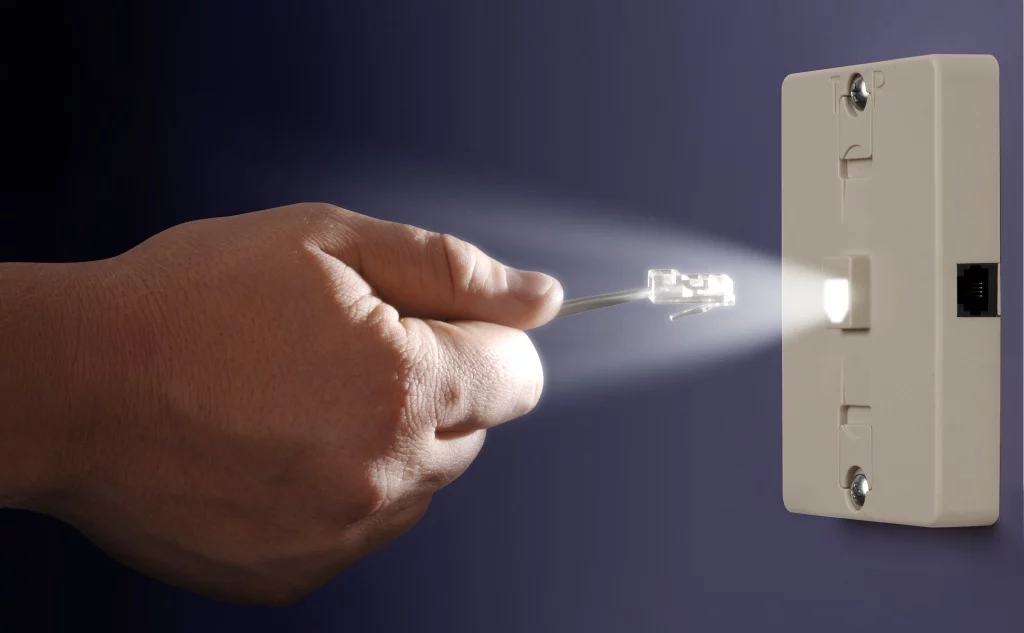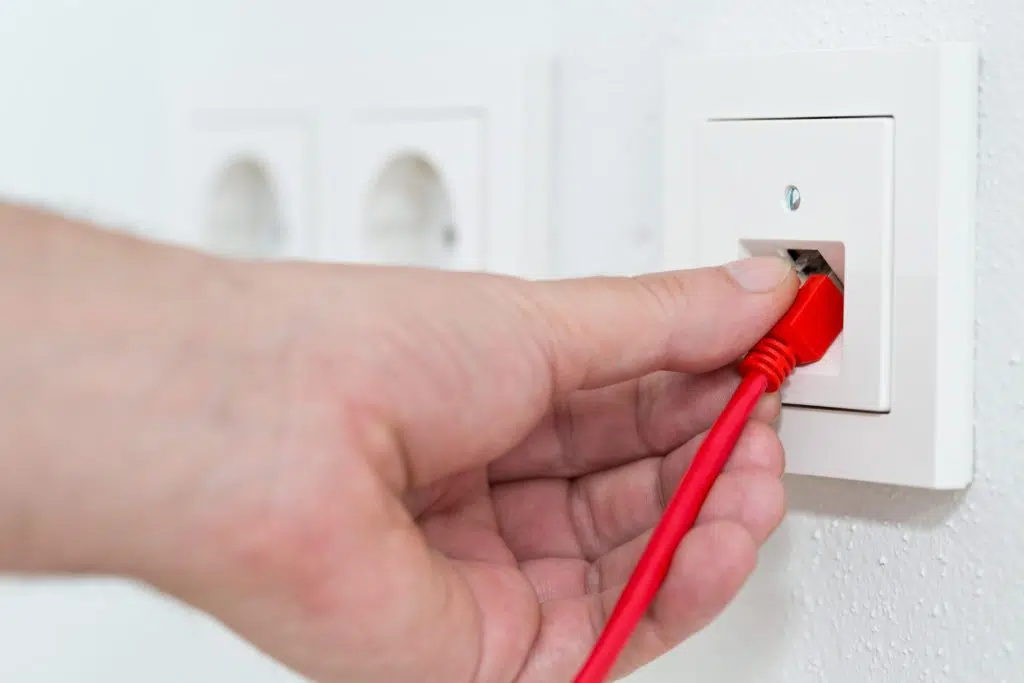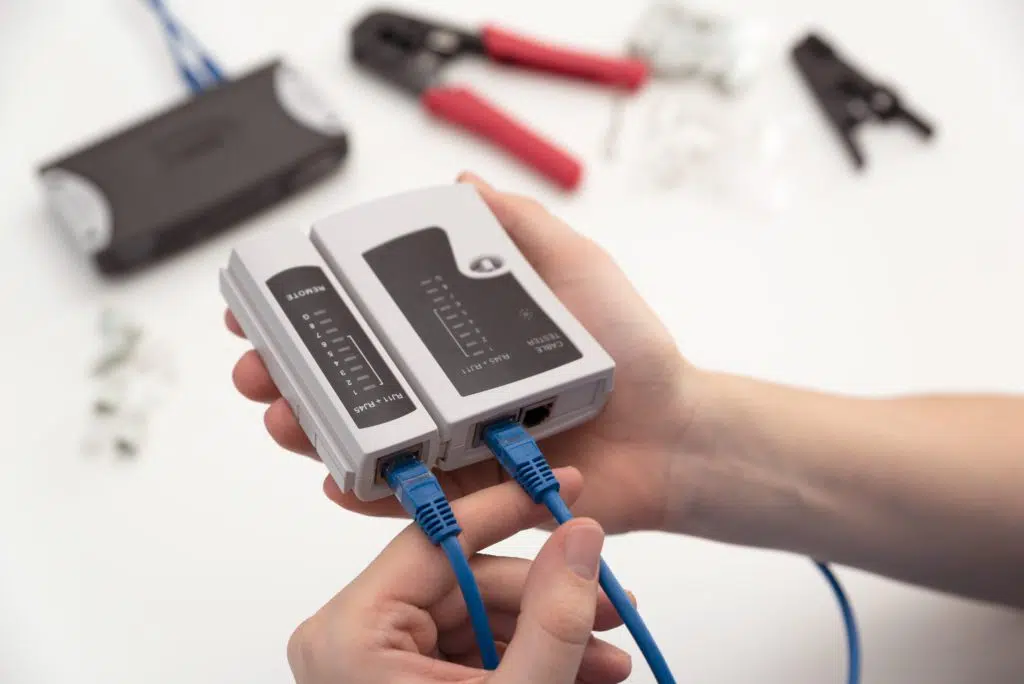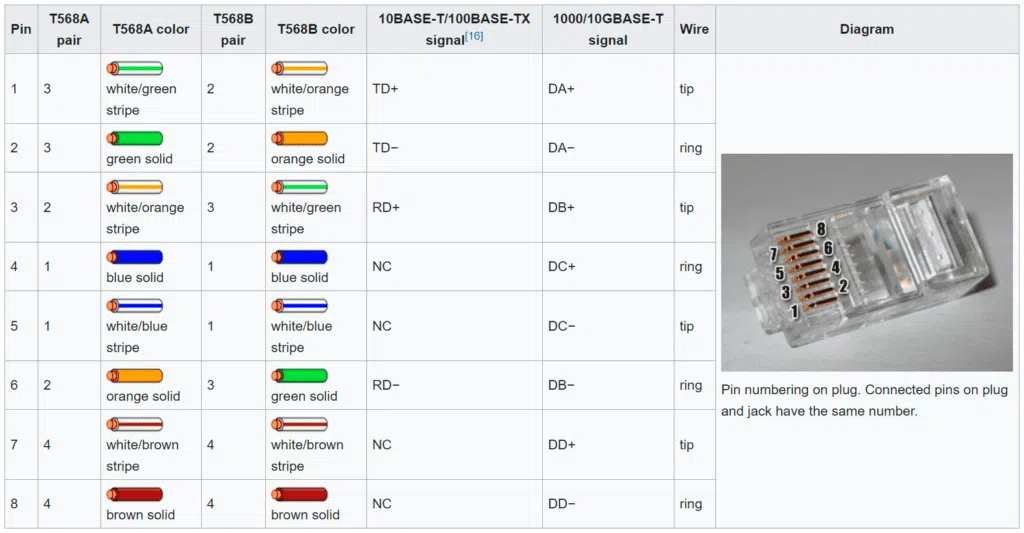Here’s why your wall Ethernet port does not work and how to fix it:
There are a gazillion reasons why your wall Ethernet port might not work.
However, here are the 4 troubleshooting solutions that cover most issues:
- Basic troubleshooting
- Problems with the patch panel
- Problems with the cable
- Problems with the wiring
So if you want to learn all about why that wall Ethernet port doesn’t work and how to fix it, then you’re in the right place.
Let’s jump right in!
- Ethernet Light Blinking & Computer Is Off: Why?
- Always-on Ethernet Port Light: Meaning?
- Ethernet Connected But No Internet: How to Fix?
- Ethernet Port Light Colors: Meanings?
- Internet With No Ethernet Wall Port: How to?
- Wi-Fi Router Without a Coaxial/Ethernet Cable: How to?
- Ethernet Cables Affecting Internet Speed: True?
- Ethernet Cable Connection: Affects Wi-Fi Speed?
- Ethernet Light Blinks Orange/Green: Meaning?

Why Is Your Wall Ethernet Port Not Working?
While today’s Wi-Fi speeds are miles away from what they used to be, chances are you’ll still run into some connection issues occasionally.
Maybe you live in a crowded area, you have too many family members connecting at the same time, or your Wi-Fi router is outdated.
Whatever the case may be, if you need a more stable, faster connection than your regular household Wi-Fi, you might be considering switching to an Ethernet connection.
These connections are known for lower latency, higher download and upload speeds, and fewer safety concerns.
But, it’s not all sunshine and roses with Ethernet either.
When your Wi-Fi doesn’t work, you can usually reset the router, and the problem will be solved, or you can call your provider to sort the problem out remotely.
But, what do you do when you plug your cable into the wall Ethernet port, and it doesn’t work?
What Are Wall Ethernet Ports Connected To?
To answer this question, we first need to know what’s on the other end of your Ethernet port.
In other words, when you plug your cable into the socket, where does it go?
What is the socket connected to?
First of all, you need to get ready for the possibility that it doesn’t lead anywhere.
The contractor/previous owner might have predicted a place for an Ethernet cable to be plugged in before any wiring was installed.
But it’s unlikely that anyone would do this and not complete the process of connecting that port to something.
Just to make sure, undo the plate from the wall and take a look inside.
Depending on where you live and some other circumstances, you might be faced with different scenarios:
- If you live in a house and you have Ethernet ports in several rooms in your house, you’ll probably be able to locate the patch panel to which they all go to. This is usually in your basement, in the attic, or in a closet in your hallway.
- If you live in an apartment, things might not be as easy. Again, you might have a patch panel somewhere in the apartment. Still, there might be a communal patch panel shared by the entire building or apartment complex. You might not be able to access this panel.
It’s important to know what your Ethernet port connects to, so you can tell whether the issue is your wall port or some other link in the chain.
Why Isn’t Your Wall Ethernet Port Working and How Can You Fix It?
So here are some reasons why your wall Ethernet port might not be working and some ways to fix it.
Keep in mind, though, that this can be a complicated issue that is perhaps best left to your ISP (Internet Service Provider) to deal with.
After all, they provide the infrastructure, and they’re in charge of making it work.
It’s unlikely that you’ve done anything to interfere with the way your wall Ethernet port works.
Fixing this issue might require tools that you’d need to go out and buy specifically for this occasion.
#1 Basic Troubleshooting
Before we get deeper into the topic, do some basic troubleshooting.

For example, examine your wall jack thoroughly. If it has paint in it, that might be the problem.
Paint can often damage the conductors, which would require you to replace the whole RJ45 jack.
Also, undo the jack from the wall and closely examine the wires. Is there a wire loose? That would explain your problem.
In any case, you might want to replace your jack just to play it safe.
Repeated connects and disconnects can sometimes create mechanical problems and physically damage anything in the jack.
Get a new one, reconnect everything, and see if it works.
#2 Problems With the Patch Panel
If this doesn’t work, the problem might be with your patch panel. Locate the patch panel in your house and examine it.
The first thing you want to check is whether each wire goes to where it’s supposed to.
If you’re lucky, your wires will be labeled with stickers (e.g., “living room,” “NE bedroom,” etc.).
But, if they’re not (and, let’s face it – they usually aren’t), you’ll have to use a cable tester or a similar device that can tell you whether everything is in order.

These devices work by providing you a pair of tools: one is placed at the patch panel and the other at the wall port.
If the port in your patch panel corresponds with the wall port, you’ll get a signal.
Use this device to see if all the wires are correctly connected.
#3 Problems With the Cable
You might have a problem with your Ethernet cable somewhere in your walls.
To check this, you’ll need a Time-Domain Reflectometer (TDR). These devices are used to identify breaks and other issues in coaxial, twisted pair, and other cables (Ethernet cables are usually twisted pair).
A TDR will tell you where the break is in your wall and on what pair.
High-end patch panels might even have this option built-in, but it’s more likely that you’ll need to purchase a TDR or re-pull the wire to identify this problem.
#4 Problems With the Wiring
This is an unlikely cause for this problem, but your Ethernet wall socket might be wired wrong.
It’s unlikely because whoever wired your socked (usually technicians from your ISP) probably knew what they were doing.
But suppose this was done by the previous owner, landlord, or anyone else with insufficient knowledge.
In that case, you might be able to solve your problem by simply tweaking a few wires.
Here’s what this is about: an Ethernet wall socket is the final part of the Ethernet cable running through your house/apartment.
Inside the Ethernet cable, there are eight wires—four of them are in charge of transmitting and the other four for receiving data.
When the wall socket is installed, these eight wires are arranged in a specific way to connect to the correct pins.
As you can see, there are two wiring standards: T568A and T568B. It doesn’t matter which one you use.
It only matters that one cable uses the same standard on both ends (so, both in your wall socket and your patch panel).
Check the wiring on both your patch panel and your wall socket (whether the wires are connected to the right pins) and check whether the same standard is being used on both ends.
If any of these things is wrong, that might be the cause of your issue.


